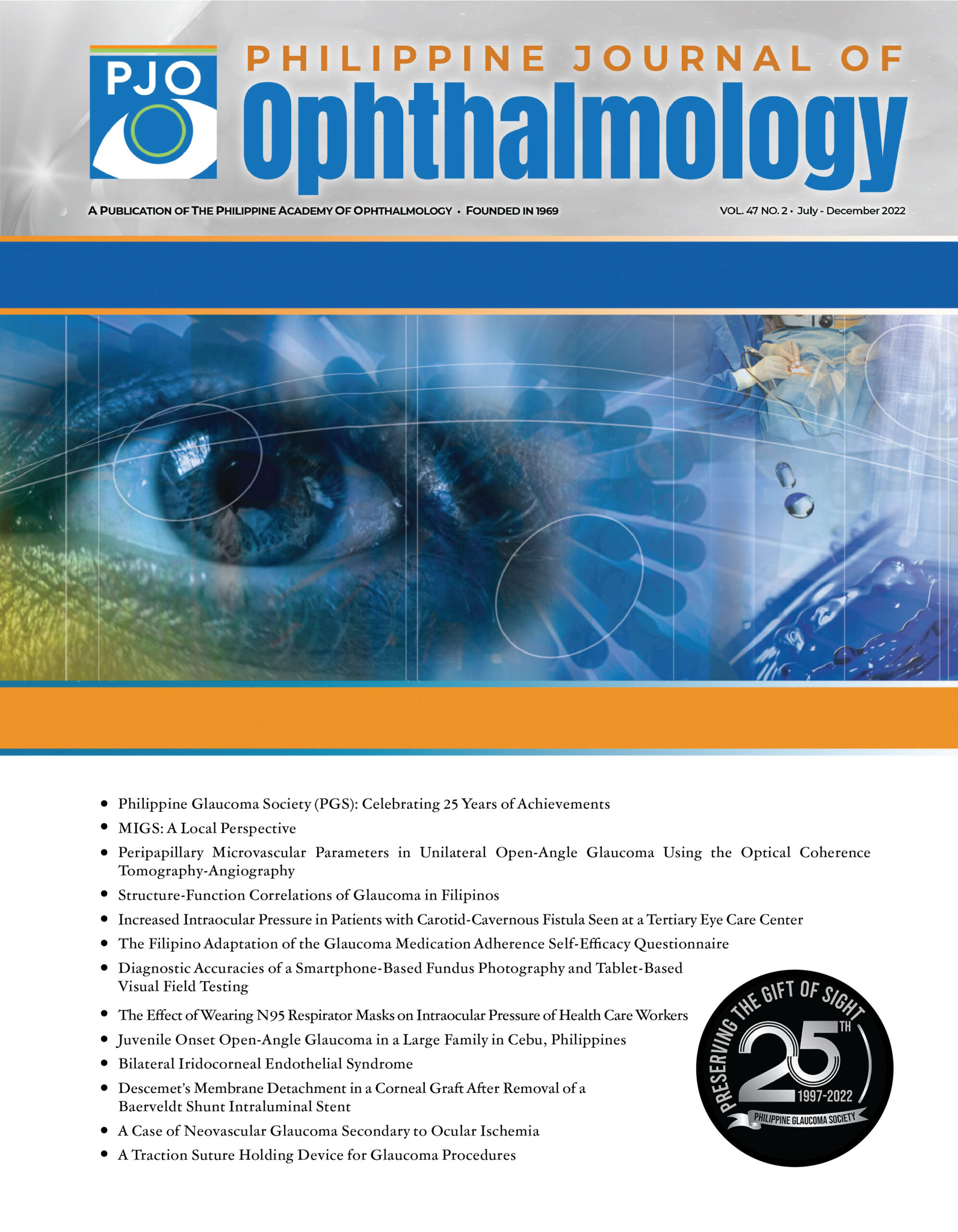Bilateral Iridocorneal Endothelial Syndrome
Keywords:
iridocorneal endothelial syndrome, progressive iris atrophy, glaucoma drainage devices, secondary glaucomaAbstract
Objectives: We presented a case of bilateral iridocorneal endothelial (ICE) syndrome with secondary glaucoma and discussed its clinical presentation and management.
Study design: This is a case report.
Results: A 12-year old female consulted for a one-year history of progressive blurring of vision in both eyes associated with abnormal pupils and occasional eye pain. Polycoria, shallow anterior chambers, increased intraocular pressures (IOP), areas of closed angles on gonioscopy, and increased cup-to-disc ratio in both eyes indicative of ICE syndrome were present. Management included anti-glaucoma medications and implantation of glaucoma drainage devices (GDD).
Conclusion: Early detection with regular follow-ups leading to prompt management of the ICE syndrome are necessary. IOP control may be challenging due to the nature of the disease and may require multiple surgeries including GDD implantation to achieve successful outcomes. Early use of GDD may be beneficial for pediatric patients with ICE and glaucoma, and may require additional surgeries to adequately manage the IOP.
Published
Issue
Section
License
Copyright (c) 2022 Philippine Journal of Ophthalmology

This work is licensed under a Creative Commons Attribution-NonCommercial 4.0 International License.




